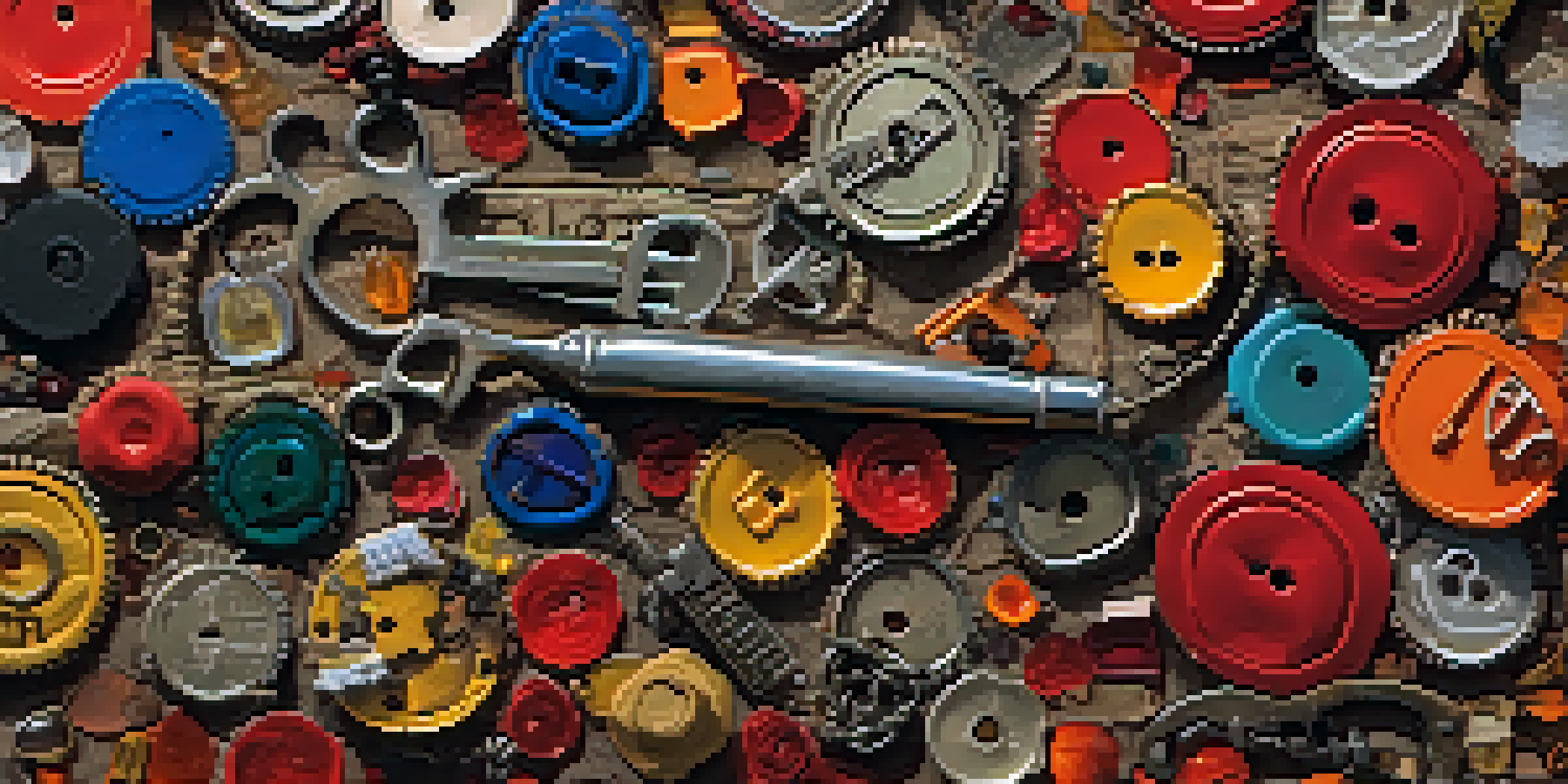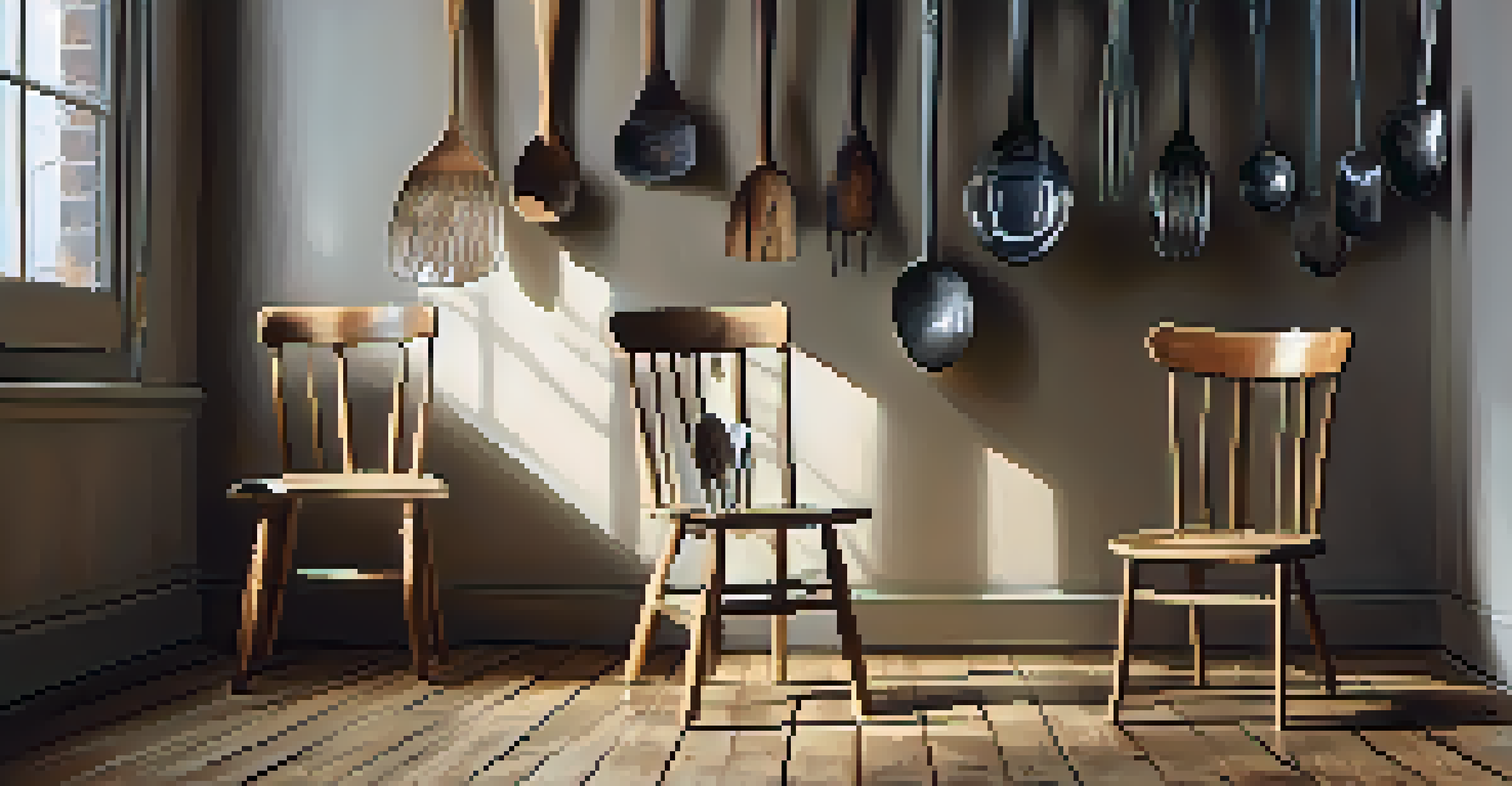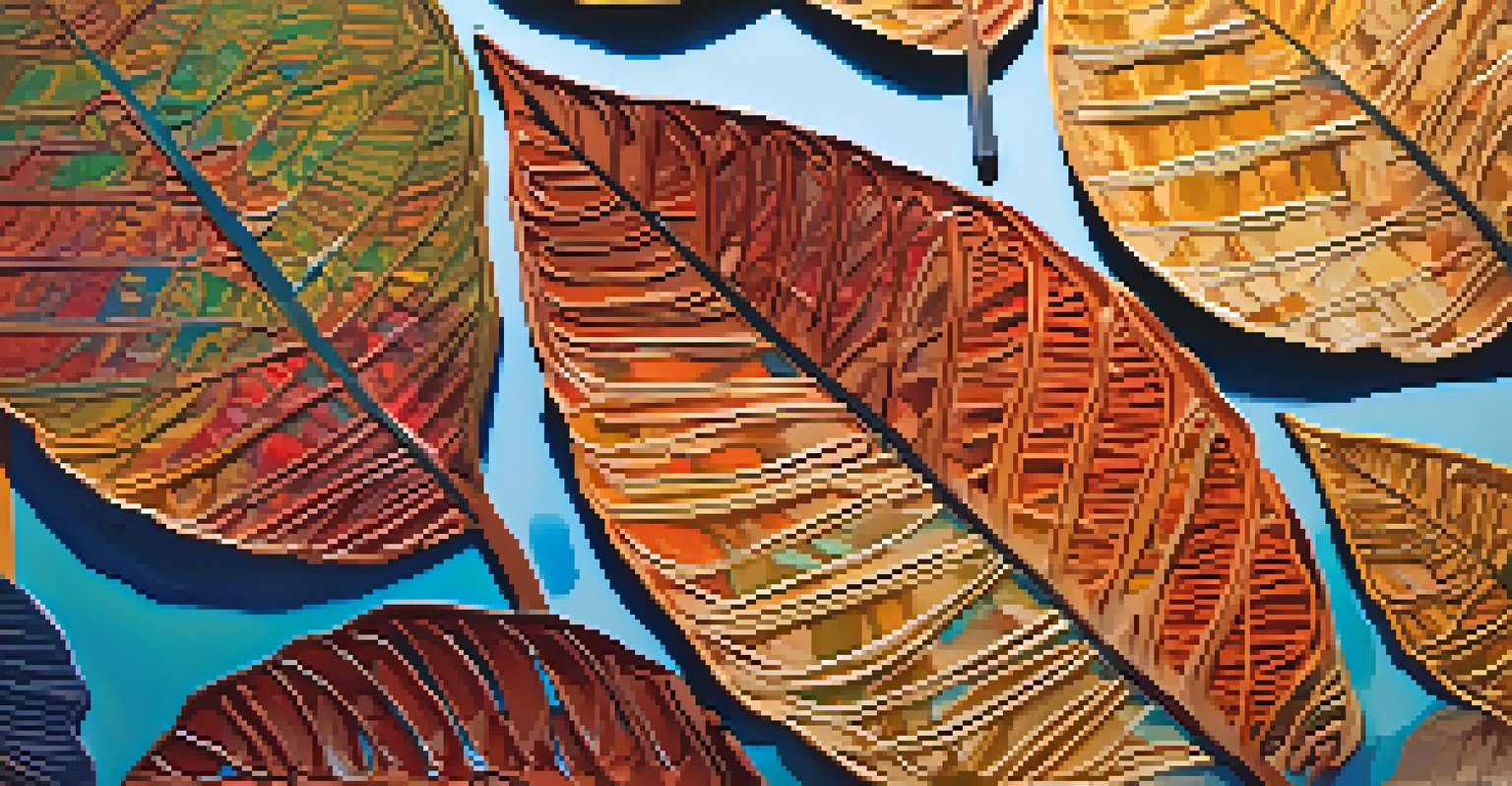Using Found Objects in Experimental Painting and Installations

What Are Found Objects in Art?
Found objects are everyday items repurposed as art materials, often carrying their own history and significance. Think of an old shoe, a rusty bike, or even discarded plastic bottles; these items can evoke emotions and stories that resonate with viewers. By integrating these objects into their work, artists challenge traditional notions of what art is and can be, blurring the lines between art and life.
Art is what you can get away with.
The beauty of found objects lies in their ability to surprise and engage. An artist might take a mundane item and transform it into something thought-provoking, allowing audiences to see the familiar in a new light. This transformative process not only showcases creativity but also encourages viewers to reflect on their relationship with everyday materials.
Incorporating found objects invites a sense of exploration and discovery into the artistic process. Artists often stumble upon these treasures in thrift stores, flea markets, or even their own backyards, turning the act of collecting into an art form itself. Each piece tells a story, creating layers of meaning that enrich the overall artwork.
The Role of Context in Found Object Art
Context plays a crucial role in how found objects are perceived in art. When an artist places a common object within an artistic framework, it alters its significance, prompting viewers to question its original purpose. For instance, a simple spoon might evoke nostalgia or, when mounted on a canvas, provoke thoughts about consumption and waste.

Creating an installation with found objects allows for a deeper engagement with the space and the viewer. Artists can manipulate the arrangement, lighting, and surrounding elements to create an immersive experience. This transformation encourages participants to interact with the artwork, fostering a dialogue that extends beyond visual appreciation.
Found Objects Transform Art
Everyday items, like old shoes and rusty bikes, can be repurposed into art, encouraging viewers to see familiar objects in a new light.
Consider how a single object might change meaning based on its surroundings. A broken chair in a gallery might symbolize abandonment, while the same chair in a cozy living room could evoke comfort and warmth. This fluidity of meaning is a powerful tool for artists, enabling them to convey complex ideas through simple materials.
Techniques for Using Found Objects in Painting
Incorporating found objects into painting can take many forms, from collage techniques to mixed media applications. Artists often use adhesive methods to attach objects directly to the canvas, creating a tactile experience that draws viewers in. This layering not only adds dimension but also integrates the object's narrative into the artwork.
The artist is a collector of moments, memories, and objects—transforming the discarded into the extraordinary.
Another popular technique is incorporating found textures, such as fabric or natural materials, to create a more dynamic surface. By utilizing these textures, artists can evoke a sensory response, inviting audiences to feel as well as see the artwork. This approach blurs the lines between painting and sculpture, expanding the possibilities of artistic expression.
Furthermore, artists might use found objects as tools or stencils, allowing them to imprint unique patterns onto their canvases. For example, using a piece of mesh or a leaf can create intricate designs that add depth and complexity. This innovative use of everyday items showcases the limitless potential of creativity in art.
Environmental Consciousness Through Found Objects
Using found objects in art also highlights themes of sustainability and environmental consciousness. By repurposing discarded materials, artists draw attention to issues of waste and consumption, encouraging viewers to reconsider their own habits. This practice transforms what might be seen as trash into valuable art, fostering a dialogue about our relationship with the environment.
Artists like Vik Muniz have famously taken this concept to heart, creating stunning works from recycled materials. Through their art, they challenge societal norms and push for a more sustainable future. By showcasing the beauty in what we often overlook, these artists inspire change and awareness among their audiences.
Context Alters Perception
The meaning of found objects can shift dramatically based on their context, prompting deeper engagement and reflection from viewers.
Moreover, found object art highlights the potential for creativity in everyday life. If artists can turn trash into treasure, perhaps we can all find inspiration in the discarded items around us. This perspective encourages a shift towards a more mindful approach to consumption and creativity.
Famous Artists Who Use Found Objects
Throughout history, many renowned artists have embraced found objects in their work. Marcel Duchamp is a pioneer in this realm, famously presenting a urinal as art in 1917, which challenged conventional definitions of creativity. His work paved the way for future generations to explore the boundaries of art and its relationship with everyday items.
Another notable artist is Joseph Cornell, who created intricate shadow boxes filled with found objects, each telling a unique story. His work invites viewers to explore the hidden narratives within seemingly ordinary things, demonstrating the power of context and memory in art. Cornell's innovative approach continues to inspire contemporary artists to think outside the box.
More recently, artists like El Anatsui have gained recognition for their stunning installations made from discarded materials, such as bottle caps and aluminum. His large-scale works not only captivate audiences visually but also communicate powerful messages about consumerism and waste. These artists remind us that found objects can serve as powerful tools for storytelling and social commentary.
Challenges of Working with Found Objects
While using found objects can be rewarding, it also comes with its own set of challenges. Sourcing materials can be time-consuming, and not all objects will fit seamlessly into an artist's vision. The need to balance aesthetics with the story each object tells can create tension in the creative process.
Moreover, the unpredictability of found objects means artists must be adaptable and flexible in their approach. Sometimes, an object might not behave as expected, leading to unexpected results that could be either frustrating or serendipitous. Embracing this uncertainty can be a learning experience, pushing artists to think on their feet and innovate.
Sustainability in Art
Using found objects highlights themes of environmental consciousness, transforming waste into valuable art and fostering discussions on consumption.
Finally, there’s the potential for criticism when using found objects. Some may question whether these works can truly be considered 'art' or if they lack the skill and craftsmanship of traditional methods. However, this critique can serve as a catalyst for deeper conversations about the nature of art and the value we assign to different materials and techniques.
The Future of Found Object Art
As we move further into the 21st century, the use of found objects in art continues to evolve. With growing concerns about environmental issues and consumer culture, artists are increasingly turning to discarded materials to create meaningful work. This trend not only reflects societal shifts but also highlights the importance of sustainability in artistic practices.
Moreover, the rise of digital platforms allows artists to share their found object creations with wider audiences. Social media has become a powerful tool for showcasing innovative work, fostering a global community of artists committed to exploring the potential of found materials. This connectivity encourages collaboration and experimentation across borders.

In conclusion, the future of found object art is bright and full of possibilities. As artists continue to push boundaries and challenge conventions, we can anticipate even more imaginative and thought-provoking works that inspire us to see the beauty in the everyday. The journey of transformation from discarded to distinguished is a testament to the resilience of creativity in our world.